Komentáře / Otázky (53)
![]() Gertrud napsala:
Gertrud napsala:
Hej igen! Jag menar om stjärtfenan skall virkas med dubbelt garn,eftersom jag får hälften över. Kan inte se att det står någonstans. Nån som vet??
16.10.2023 - 17:05Odpověď DROPS Design :
Hej Gertrud. Stjärtfenan ska inte virkas med dubbelt garn vad jag kan se heller. Jag ser inte att vi fått andra kommentarer om att det är för mycket garn i den färgen. Det som kan påverka garnåtgången är virkfastheten, så dubbelkolla gärna den. Mvh DROPS Design
19.10.2023 - 09:40
![]() Gertrud napsala:
Gertrud napsala:
Hej! Jag undrar angående stjärtfenan. Ska den virkas dubbel? Jag har nästan virkat den färdig och får hälften av det mörkgrå garnet över. Vad har jag gjort för fel? De andra färgerna har stämt jättebra.
12.10.2023 - 17:23
![]() Heidi napsala:
Heidi napsala:
Hej, jeg er nyhækler og kunne godt tænke mig at hækle, haj tæppet i voksenudgave, ca. 185 cm høj, hvor mange masker vil I tro jeg skulle gå ud fra? Det er til min mand, da han elsker hajer.
05.09.2023 - 21:42Odpověď DROPS Design :
Hei Heidi. Se på målene på den største str. Om du syns bredden er bra, fortsetter du bare å hekle med grå til ønsket lengde før det byttet til sort/rødt/natur. Om du ønsker bredere teppe øverst, fortsetter du å øke til ønsket bredde, så hekles det til ønsket lengde før det byttet til sort/rødt/natur. HUSK du trenger mer garn (det har vi ikke oversikten over). mvh DROPS Design
11.09.2023 - 15:14
![]() Miriam napsala:
Miriam napsala:
Boating
01.09.2023 - 04:08
![]() Josephine napsala:
Josephine napsala:
Wenn ich bei 50 Stäbchen aller 10cm 5Stäbchen zunehmen muss (10x)komme ich auf 100stäbchen.wenn ich aber nach JEDER Zunahme in Jeder 2.Reihe noch 1Stäbchen zunehmen muss dann komm ich nicht auf 101 Stäbchen sondern auf 111Stäbchen oder nicht?
28.05.2023 - 18:33Odpověď DROPS Design :
Liebe Josephine, es sind 50 Stäbchen vor den Zunahmen, dann nehmen Sie zuerst 5 Stäbchen 10 Mal = 50 Stäbchen werden zugenommen = 100 Stäbchen + 1 Zunahme = 101 Stäbchen. Viel Spaß beim häkeln!
30.05.2023 - 10:50
![]() Christine napsala:
Christine napsala:
Die Anleitung ist wirklich gut. Allerdings habe ich Probleme mit den Zähnen. Zumal die Anleitung in Deutsch und Englisch sich an dieser Stelle widersprechen. Im Deutschen heisst es man startet mit 2 festen Maschen, dann ein Doppeltes Stäbchen, 2 Stäbchen und nochmal ein doppeltes Stäbchen in eine Masche, etc. Im Englischen heisst es man startet damit, zwei Maschen zu überspringen, was in meinen Augen viel mehr Sinn ergibt. Ich ribbel noch einmal die kompletten Zähne auf und starte neu.
18.05.2023 - 16:30Odpověď DROPS Design :
Liebe Christine, vielen Dank für den Hinweis, das Wort *überspringen* fehlt ja in deutch und wird korrigiert; viel Spaß beim häkeln!
19.05.2023 - 09:11
![]() Michelle napsala:
Michelle napsala:
Hello! I am wondering how to scale up this pattern for an adult. I’d like to make this as a gift, but the person is 6ft tall 117kg so I’m not sure this will fit them! Love the pattern, seems straightforward enough as a beginner! Thank you :)
08.12.2022 - 03:53Odpověď DROPS Design :
Dear Michelle, we are unfortunately not able to adjust every pattern to every individual request - feel free to ask your yarn store or any crochet forum. Thanks for your comprehension. Happy crocheting!
08.12.2022 - 10:09
![]() Gitte napsala:
Gitte napsala:
Any problems if I crochet the bottom of the tail in a circle instead of back and forth.? And avoid having to sew it together
10.01.2022 - 20:51Odpověď DROPS Design :
Dear Gitte, do you want to avoid the vent/opening at the top of blanket avoiding a seam? then just think about how long you would like this opening to be then work in the round (but maybe working alternately from RS and from WS to keep same texture all the way). Happy crocheting!
11.01.2022 - 09:03
![]() Laurie napsala:
Laurie napsala:
Bonjour, pouvez vous me confirmer, pour le corp je fais le modèle 7/8 ans, après avoir augmenté de 1 BRIDE afin d'obtenir 81 brides, je dois continuer sans augmentation jusqu'à le modèle fasse 94 cm ou je dois augmenter de 1 bride un tour sur 2 jusqu'à le modèle fasse 94 cm ? Merci de votre réponse
06.10.2021 - 08:58Odpověď DROPS Design :
Bonjour Laurie, en taille 7/8 ans, quand toutes les augmentations sont faites, vous avez 81 brides, et vous continuez ensuite en brides (= 1 bride dans chacune de ces 81 brides) sans augmenter davantage jusqu'à ce que l'ouvrage mesure 94 cm. Bon crochet!
06.10.2021 - 16:14
![]() Annemiek Van De Rijt napsala:
Annemiek Van De Rijt napsala:
Er staat bij het lijf dat je de lossen met een halve vaste tot een ring moet sluiten en daarna heen en weer haken maar de deken is toch niet rondom gesloten?
28.05.2021 - 18:31Odpověď DROPS Design :
Dag Annemiek,
Het werk wordt inderdaad heen en weer gehaakt en op het einde gesloten door de naad in de lengte dicht te naaien.
31.05.2021 - 10:18
Shark Attack Blanket#sharkattackblanket |
|
 |
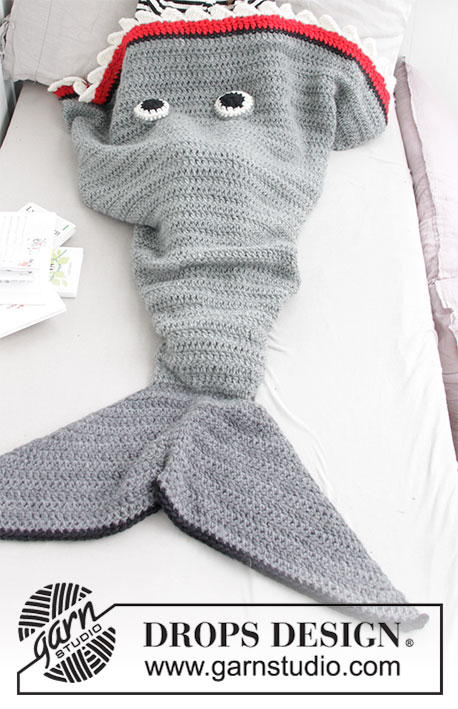 |
Dětská deka Žralok háčkovaná z příze DROPS Snow. Velikost 3-14 let.
DROPS Children 28-13 |
|
|
TIP - PŘIDÁVÁNÍ: Přidáváme uháčkováním 2 dlouhých sloupků do jednoho a téhož oka. INFO: První krátký sloupek v každé řadě nahrazujeme 1 řetízkovým okem. První dlouhý sloupek v každé řadě nahrazujeme 3 řetízkovými oky. ---------------------------------------------------------- DEKA: Trup žraloka háčkujeme zdola nahoru. K dolníku okraji trupu pak přiháčkujeme ocasní ploutev. Celou deku háčkujeme v řadách (tj. líc a rub). TRUP: Háčkem č.8 uháčkujeme šedou přízí 32-34-34-36-38-40 řetízkových ok a spojíme je pevným okem do kroužku. Dál háčkujeme v řadách! Viz INFO. Háčkujeme po 1 dlouhém sloupku do každého oka v řadě = 32-34-34-36-38-40 dlouhých sloupků. Práci otočíme a háčkujeme po 1 dlouhém sloupku do každého dlouhého sloupku v průběhu celé řady. V následující řadě přidáme rovnoměrně nová oka – viz TIP - PŘIDÁVÁNÍ! Háčkujeme dlouhými sloupky a SOUČASNĚ přidáme rovnoměrně 8-6-6-9-7-10 dlouhých sloupků = 40-40-40-45-45-50 dlouhých sloupků. Takto pokračujeme – háčkujeme v řadách a rovnoměrně přidáváme – NEŽ BUDETE POKRAČOVAT, PŘEČTĚTE SI POZORNĚ CELÝ NÁSLEDUJÍCÍ POPIS! Přidáváme 5 dlouhých sloupků v řadě vždy po 4-5-6-8-7-10 cm výšky, a to celkem 6-6-8-7-9-10x = 70-70-80-80-90-100 dlouhých sloupků. Po dokončení veškerého přidávání uháčkujeme 1 řadu bez přidávání a v následující řadě háčkujeme dlouhými sloupky a opět přidáme rovnoměrně 3-7-1-9-3-1 dlouhých sloupků = 73-77-81-89-93-101 dlouhých sloupků. Pokračujeme dlouhými sloupky (tj. po 1 dlouhém sloupku do každého dlouhého sloupku) až do výše 66-80-94-108-124-138 cm. Přízi změníme na černou a háčkujeme 1 řadu krátkých sloupků (tj. po 1 krátkém sloupku do každého dlouhého sloupku). Pak změníme přízi na červenou a uháčkujeme 1 řadu dlouhých sloupků, pak 1 řadu krátkých sloupků. Přízi změníme na smetanovou a další řadu háčkujeme takto: 1 řetízkové oko,*2 krátké sloupky vynecháme, do následujícího krátkého sloupku háčkujeme: 1 2x nahozený dlouhý sloupek, 2 dlouhé sloupky, 1 2x nahozený dlouhý sloupek, 4 řetízková oka a 1 pevné oko, pak pevné oko do dalšího krátkého sloupku*, *-* opakujeme v průběhu celé řady. Přízi odstřihneme a zapošijeme. Trup je teď hotový. OCASNÍ PLOUTEV: Trup přeložíme napolovic, okraje dílu leží u sebe uprostřed (= rozparek). Tmavě šedou přízí uháčkujeme háčkem č.8 podél dolního okraje (= počáteční řada) 1 řadu krátkých sloupků vpíchnutých do obou vrstev (tj. okraj přeloženého trupu sháčkujeme dohromady) = 16-17-17-18-19-20 krátkých sloupků. Další řadu pak háčkujeme takto: 3 dlouhé sloupky do 1. oka, po 1 dlouhém sloupku do každého oka až po prostřední 4 oka, po 1 krátkém sloupku do každého z těchto 4 ok, po 1 dlouhém sloupku do každého oka až po poslední oko v řadě – do posledního oka uháčkujeme 3 dlouhé sloupky. Tuto řadu opakujeme celkem 13-15-16-17-18-19x = díl měří asi 26-30-32-34-36-38 cm. Přízi změníme na 2 vlákna černé a uháčkujeme 1 řadu krátkých sloupků. Přízi odstřihneme a zapošijeme. OČI: Vyrobíme 2 oči a šedou přízí je přišijeme asi 10 cm od horního okraje deky. Postupujeme takto: Háčkem č.8 uháčkujeme černou přízí 3 řetízková oka a spojíme je pevným okem do kroužku. 1. KRUHOVÁ ŘADA: 3 řetízková oka (nahrazují 1. dlouhý sloupek), 11 dlouhých sloupků kolem kroužku z řetízkových ok, končíme 1 pevným okem do 3. řetízkového oka (= 12 dlouhých sloupků). Přízi odstřihneme a změníme na smetanovou. 2. KRUHOVÁ ŘADA: 1 řetízkové oko (nahrazuje 1. krátký sloupek), po 1 krátkém sloupku do každého dlouhého sloupku, končíme 1 pevným okem do 1. řetízkového oka (= 12 krátkých sloupků). Přízi odstřihneme a změníme na šedou. 3. KRUHOVÁ ŘADA: 1 řetízkové oko (nahrazuje 1. krátký sloupek), 1 krátký sloupek do toho stejného oka, pak po 2 krátkých sloupcích do každého krátkého sloupku až do konce kruhové řady, končíme 1 pevným okem do 1. řetízkového oka (= 24 krátkých sloupků). Přízi odstřihneme a zapošijeme. ROZPAREK: Rozparek sešijeme do libovolné výše - 20-30 cm od ocasní ploutve, pokud chceme zabalit pouze chodidla, pokud chceme zabalit celé nohy, sešijeme tělo žraloka do poloviny. |
|
Dokončili jste tento model?Pak označte své fotky tagem #dropspattern #sharkattackblanket nebo je pošlete do galerie #dropsfan. Potřebujete s tímto návodem poradit?Otevřete-li si návod na stránce garnstudio.com, najdete tam 12 výukových video-ukázek, Komentáře/Dotazy a další užitečné informace. © 1982-2025 DROPS Design A/S. Vyhrazujeme si veškerá práva. Tento dokument, včetně všech jeho dílčích částí, podléhá autorským právům. Podrobnější komentář k možnostem užití našich návodů najdete dole pod každým návodem na našich stránkách. |
|







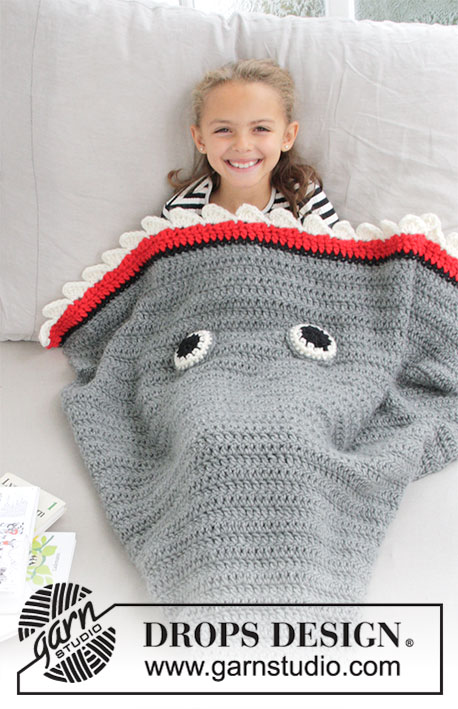
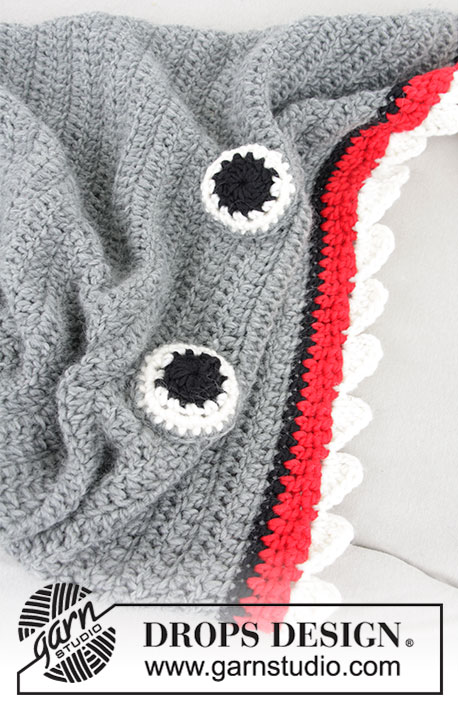
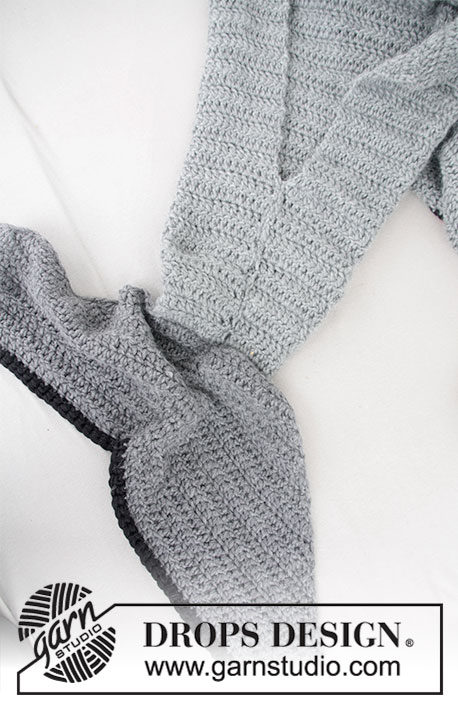

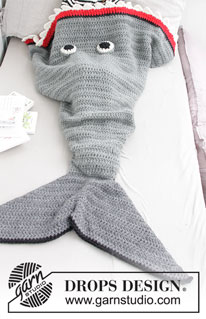
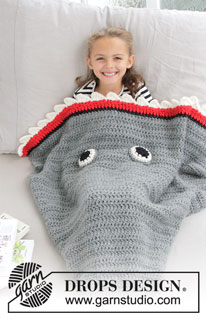
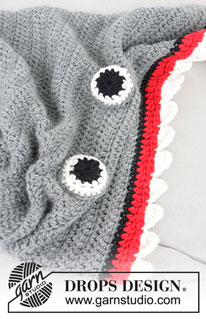
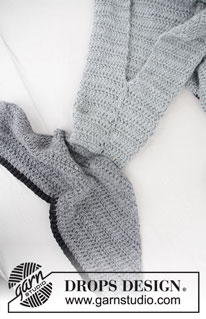







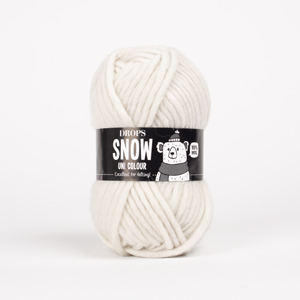
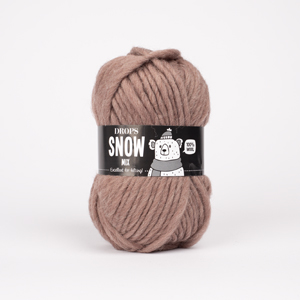
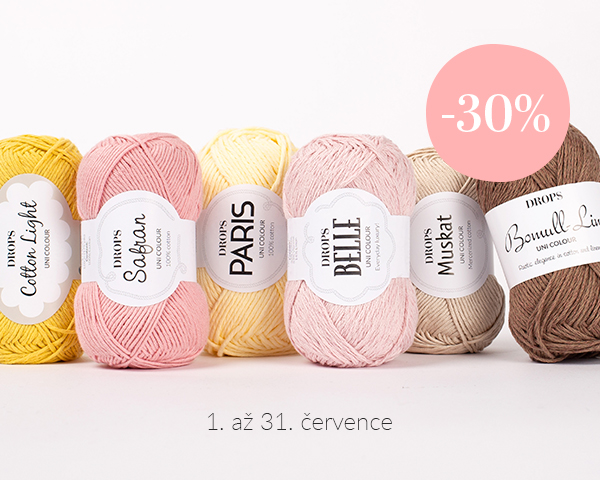













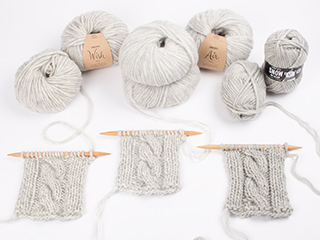






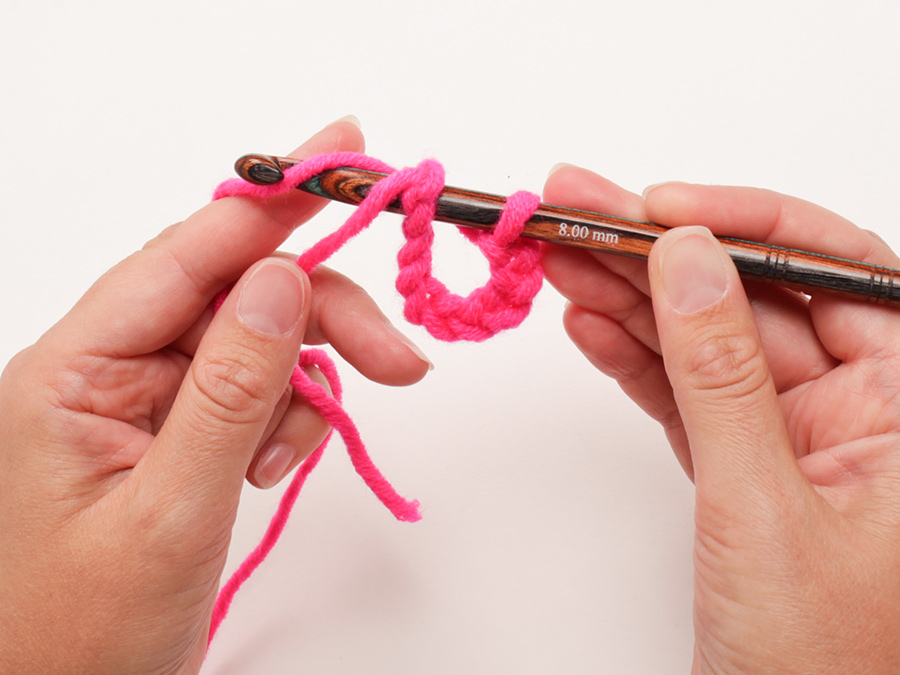



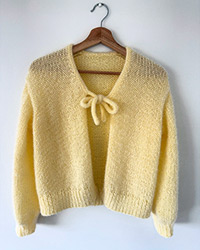
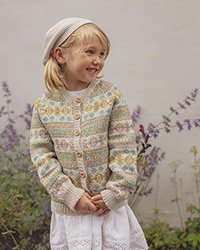
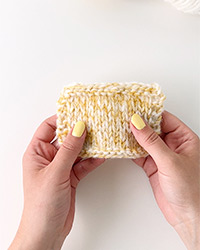
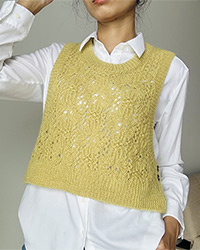

Přidejte komentář k návodu DROPS Children 28-13
Rádi bychom věděli, co si o tomto modelu myslíte!
Pokud se chcete na něco zeptat, dbejte prosím na to, abyste ve formuláři níže vybrali správnou kategorii - díky tomu se dříve dozvíte, co potřebujete vědět. Povinná pole jsou označena *.